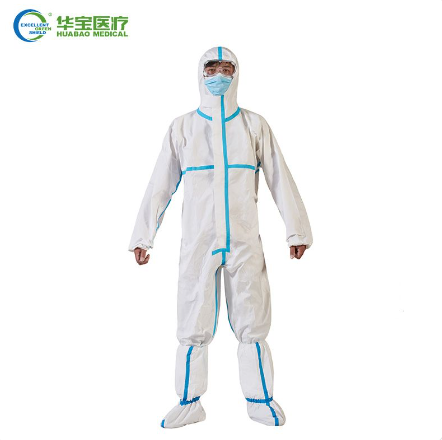Your Position: Home - Health & Medical - Understanding the Distinctions: Medical Protective Clothing vs. Isolation Gown
In the realm of healthcare, the importance of personal protective equipment (PPE) cannot be overstated. Among the key components of PPE are medical protective clothing and isolation gowns, each designed for specific purposes. This article aims to elucidate the disparities between these two crucial pieces of protective gear.
Medical Protective Clothing: Rigorous Standards for Comprehensive Protection
Medical protective clothing, often referred to as healthcare uniforms, serves as a robust barrier against various hazards in clinical settings. It encompasses a full-body suit that covers healthcare professionals from head to toe. The material used in medical protective clothing is chosen with meticulous consideration, typically involving fabrics that are impermeable to liquids and resistant to penetration by microorganisms.
Performance Indicators for Medical Protective Clothing:
Barrier Performance: Medical protective clothing must exhibit high barrier performance to prevent the transmission of infectious agents. This includes resistance to penetration by liquids and solid particles, ensuring that the healthcare professional is shielded from potential contaminants.
Comfort and Breathability: Despite the need for impermeability, medical protective clothing should also prioritize comfort. The fabric must allow for adequate air exchange to prevent overheating, especially during prolonged use.

Durability: Given the demanding nature of healthcare environments, the durability of medical protective clothing is paramount. The material should withstand rigorous activities without compromising its protective properties.
Isolation Gowns: Targeted Protection with a Focus on Practicality
Isolation gowns, on the other hand, are designed for specific situations where the risk of exposure to infectious agents is lower compared to intensive medical procedures. They are typically used in settings like isolation rooms, standard patient care, and basic laboratory work. Unlike medical protective clothing, isolation gowns offer less comprehensive coverage.
Key Characteristics of Isolation Gowns:
Open Back Design: Isolation gowns often feature an open-back design, allowing for easy and quick removal. This design facilitates efficiency in situations where rapid donning and doffing are essential.
Lower Barrier Performance: While isolation gowns provide a barrier against splashes and light fluid exposure, they may not offer the same level of protection as medical protective clothing. They are suitable for scenarios where the risk of direct exposure to infectious materials is minimal.
Cost-Effectiveness: Isolation gowns are generally more cost-effective than medical protective clothing, making them a practical choice for routine use in less hazardous environments.
Conclusion: Tailored Protection for Diverse Healthcare Settings
In conclusion, the differentiation between medical protective clothing and isolation gowns lies in their intended use and the level of protection they offer. Medical protective clothing, with its stringent performance indicators, is reserved for high-risk scenarios, ensuring the safety of healthcare professionals in critical situations. On the other hand, isolation gowns, designed for less demanding situations, strike a balance between protection and practicality, making them suitable for routine use in various healthcare settings. The careful selection of PPE based on the specific needs of a task is vital to maintaining a safe and effective healthcare environment.
280
0
0
Comments
All Comments (0)